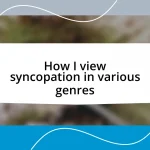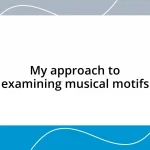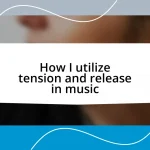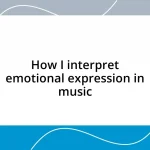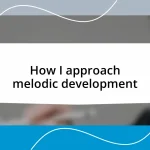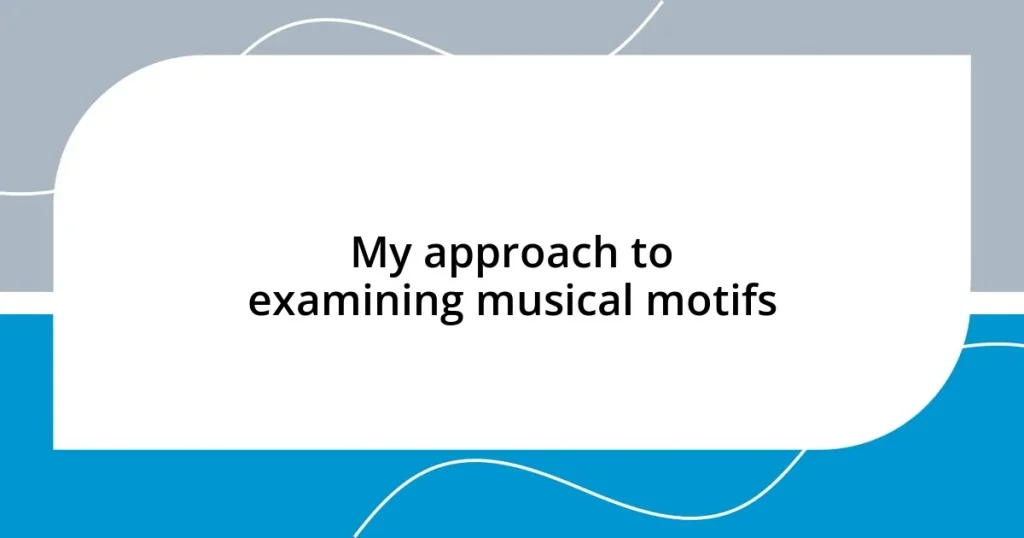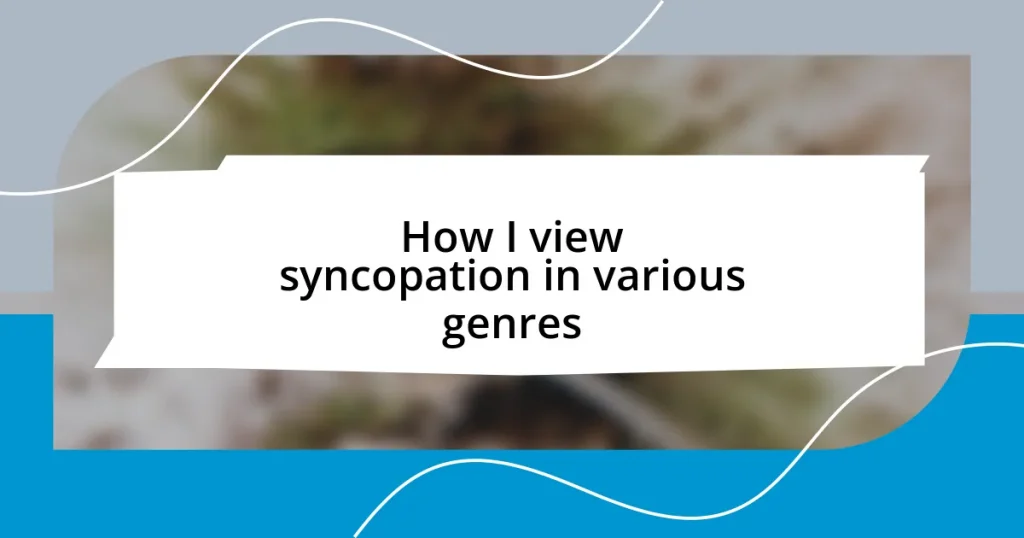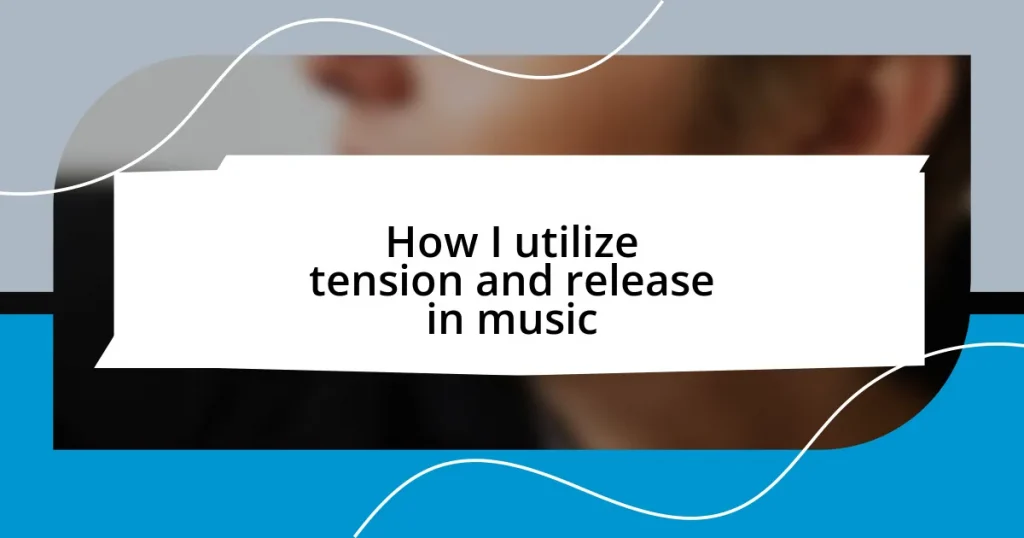Key takeaways:
- Musical motifs serve as foundational elements that evoke deep emotional connections and enhance storytelling in compositions.
- They establish identity, unify pieces, and create emotional contrasts, thus enriching the listener’s experience.
- Effective techniques for identifying motifs include active listening, using sheet music, and understanding their contextual meanings within a composition.
- Motifs have practical applications in music education, therapy, and performance interpretation, enabling deeper engagement with music.
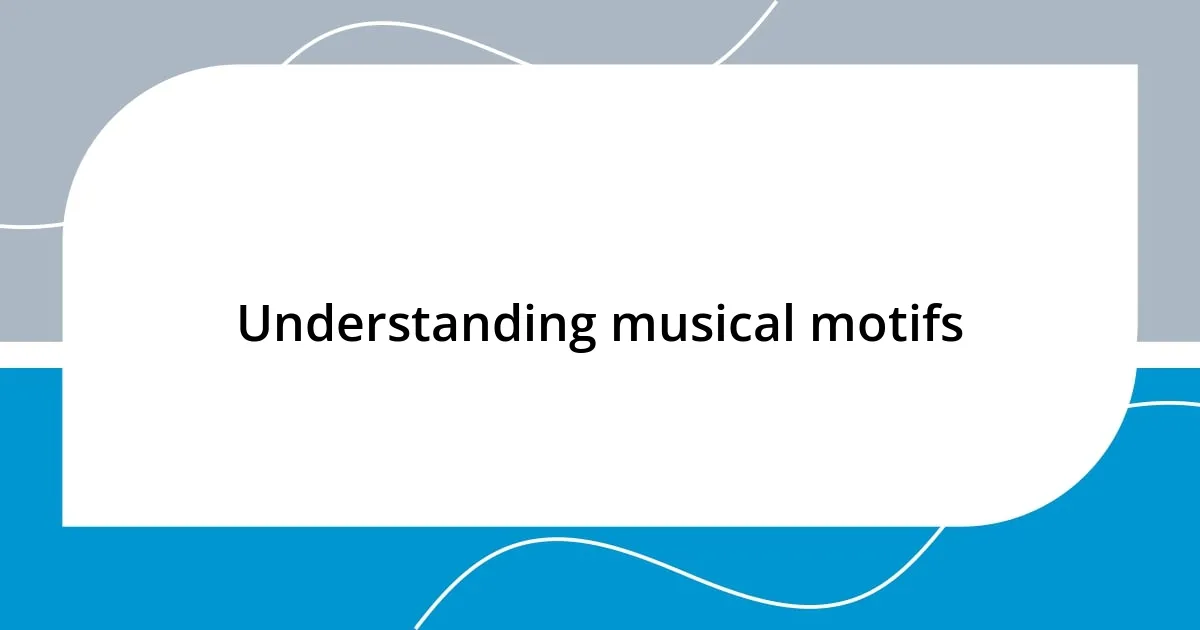
Understanding musical motifs
Musical motifs are like the DNA of a piece; they provide a foundation that composers can build upon. I remember the first time I noticed a motif during a concert, how it echoed through the piece, tying various emotions together. Have you ever felt that haunting melody linger in your mind long after the music has stopped? That’s the power of a well-crafted motif.
When I analyze motifs, I often think of them as memorable phrases in a novel; they capture a character’s essence and can evoke deep emotional connections. I vividly recall a rainy afternoon spent dissecting Beethoven’s Fifth Symphony, where every four-note motif seemed to express an entire range of human experience. Isn’t it fascinating how such simple notes can convey such complexity?
Understanding musical motifs means recognizing their role in storytelling through music. For instance, in films, motifs signal emotions or themes, guiding our feelings as we watch. It makes me wonder: how often do we subconsciously recognize these motifs as they play in the background of our favorite movies? This recognition not only enriches our listening experience but also deepens our appreciation for the craft of composition.
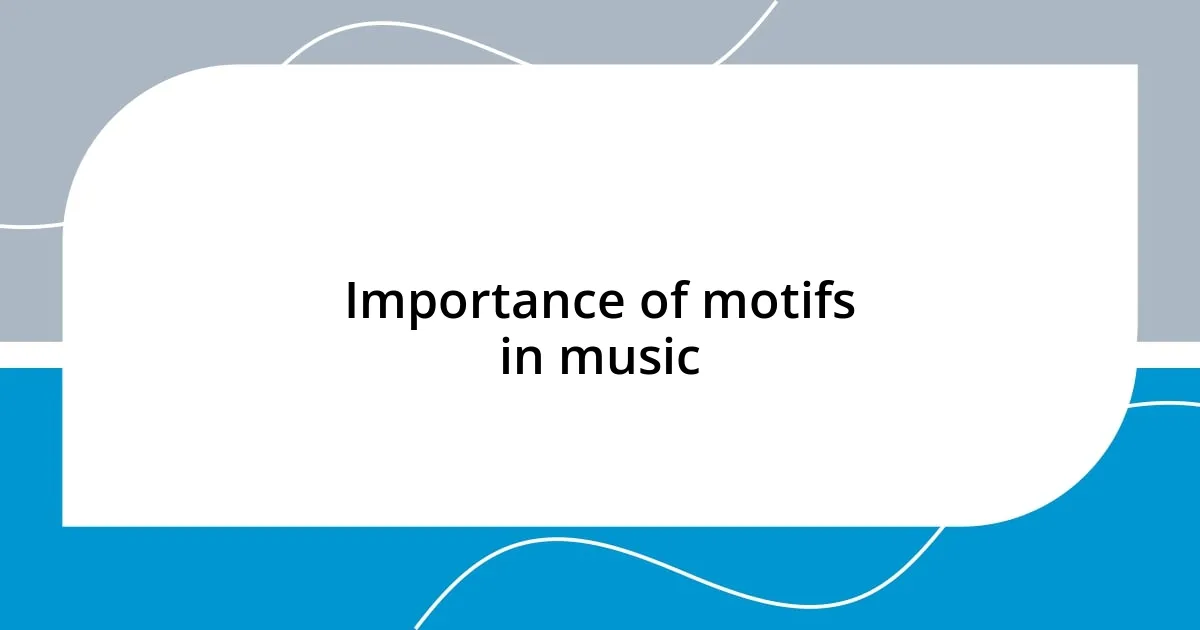
Importance of motifs in music
Musical motifs are essential for establishing identity in a composition. They create a sense of familiarity and allow listeners to connect with the music on a deeper level. I still remember the moment I heard the motif from “Star Wars.” Every time it played, I felt a rush of excitement and nostalgia, as if I were transported right back to those childhood movie nights. Isn’t it incredible how a few simple notes can evoke such vivid memories?
When I delve into the analysis of motifs, I appreciate their ability to unify a piece. Take Mozart’s “Eine kleine Nachtmusik,” for example; its motifs weave seamlessly through the movements, creating a continuous narrative that feels both cohesive and dynamic. That realization struck me during a late-night study session, where I listened to the work on repeat, each motif revealing another layer of complexity that I hadn’t noticed before. It’s like peeling back the layers of an onion – the further you go, the more depth you discover.
Motifs also play a pivotal role in emotional contrast. I think about Tchaikovsky and how his use of contrasting motifs in “Romeo and Juliet” allows listeners to feel the tension between love and conflict. The moment I first heard that dramatic motif contrasting with the tender love theme, I felt my heart race. It’s this emotional juxtaposition that allows music to speak to us in ways words sometimes cannot. Wouldn’t you agree that motifs serve as the emotional anchor within a piece, guiding us through the highs and lows of the musical journey?
| Aspect | Importance of Motifs |
|---|---|
| Establish Identity | Motifs create familiarity, enhancing listener connection. |
| Unification | They unify a composition, providing a cohesive narrative. |
| Emotional Contrast | Contrasting motifs evoke complex emotions and deepen engagement. |
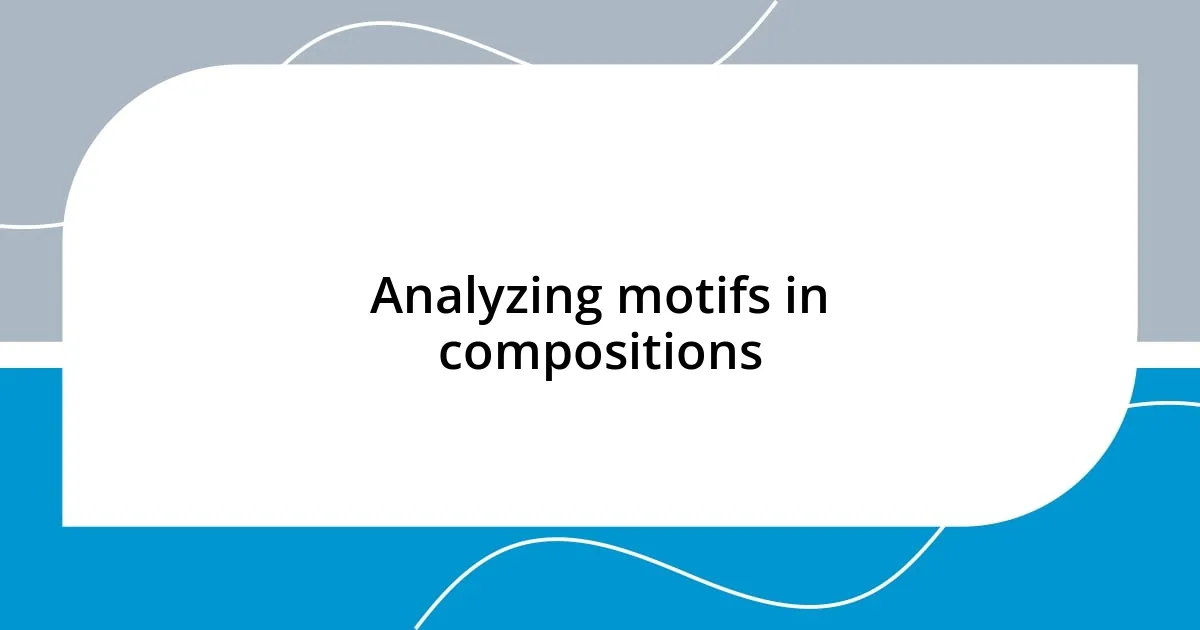
Analyzing motifs in compositions
When analyzing motifs in compositions, I find it helpful to see them as emotional signposts throughout the music. For example, during my analysis of Schubert’s “Unfinished Symphony,” I was struck by how the recurring motifs seemed to emerge from silence, creating a sense of yearning and anticipation. It reminded me of those moments in life when hope lingers quietly, waiting to be fulfilled, which is precisely what a well-crafted motif can achieve.
- Motifs evoke strong feelings, often acting as emotional cues.
- They can signify character or theme, much like a symbol in literature.
- Repetition of a motif can amplify its emotional impact, making it resonate with the listener.
As I dive deeper into the score, I enjoy tracing how motifs evolve, transform, and play against each other. One particular experience stands out: while studying Stravinsky’s “The Firebird,” I was captivated by how the motifs intertwine in a dance of tension and release. This back-and-forth mirrored the ups and downs of my own experiences, allowing me to connect the musical narrative to moments in my own life. These transformations of motifs provide a rich tapestry, narrating a story that is as much about the music as it is about us, the listeners.
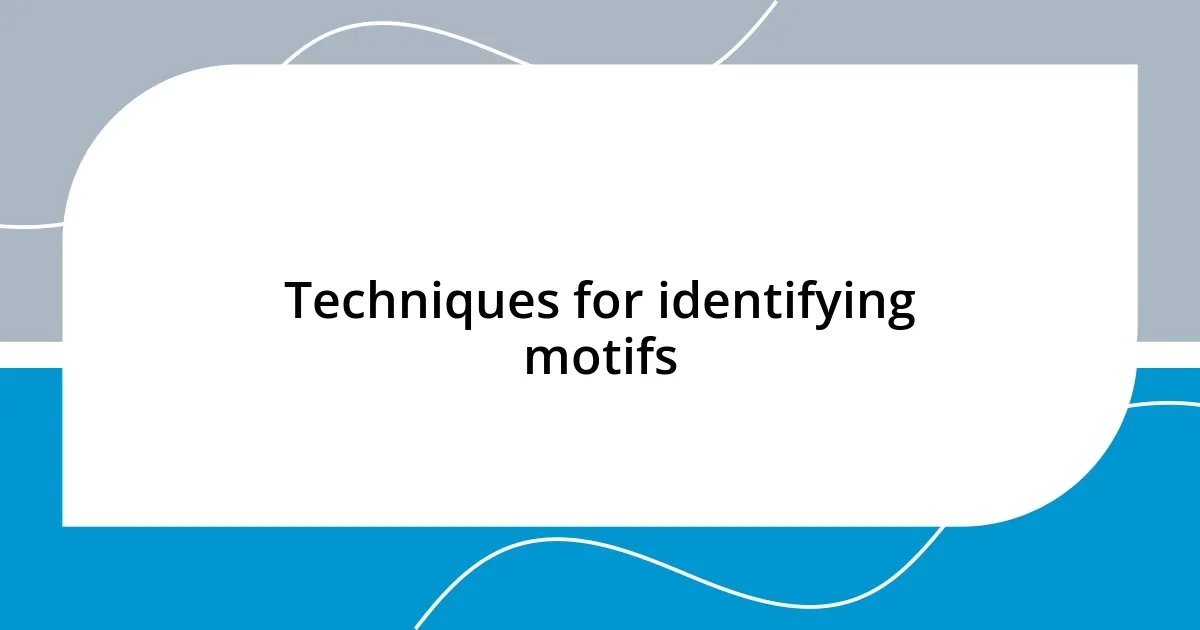
Techniques for identifying motifs
When it comes to identifying motifs, actively listening is key. I often recommend focusing on the first few listens to absorb the music as a whole. During my early encounters with Beethoven’s “Symphony No. 5,” I remember being swept away by its energy rather than dissecting it note by note. This approach allowed me to catch the familiar four-note motif that recurs throughout the piece, igniting a spark of recognition that deepened my appreciation. Have you experienced that moment when something clicks, and you suddenly start to connect the dots?
Another technique I find effective is using sheet music alongside recordings. Initially, I struggled to match notes with sounds until I started jotting down motifs as I played along. For instance, while examining Vivaldi’s “Four Seasons,” I marked where particular motifs appeared and how they interacted with others. This practice not only helped me see the patterns more clearly but also transformed the way I felt about the piece. It’s as if the music leaped off the page, coming to life with every note I traced.
Finally, I believe considering the context of a motif enriches our understanding. I recall a time diving into the dialogue of characters in Wagner’s operas, where motifs serve not just as musical phrases but as identifiers of emotions and intentions. It was enlightening to recognize how motifs evolved with the characters’ arcs, almost like witnessing an actor’s transformation on stage. Isn’t it fascinating how the same notes can convey differing narratives depending on where they sit within a composition? Exploring these layers connects us more intimately with the music.
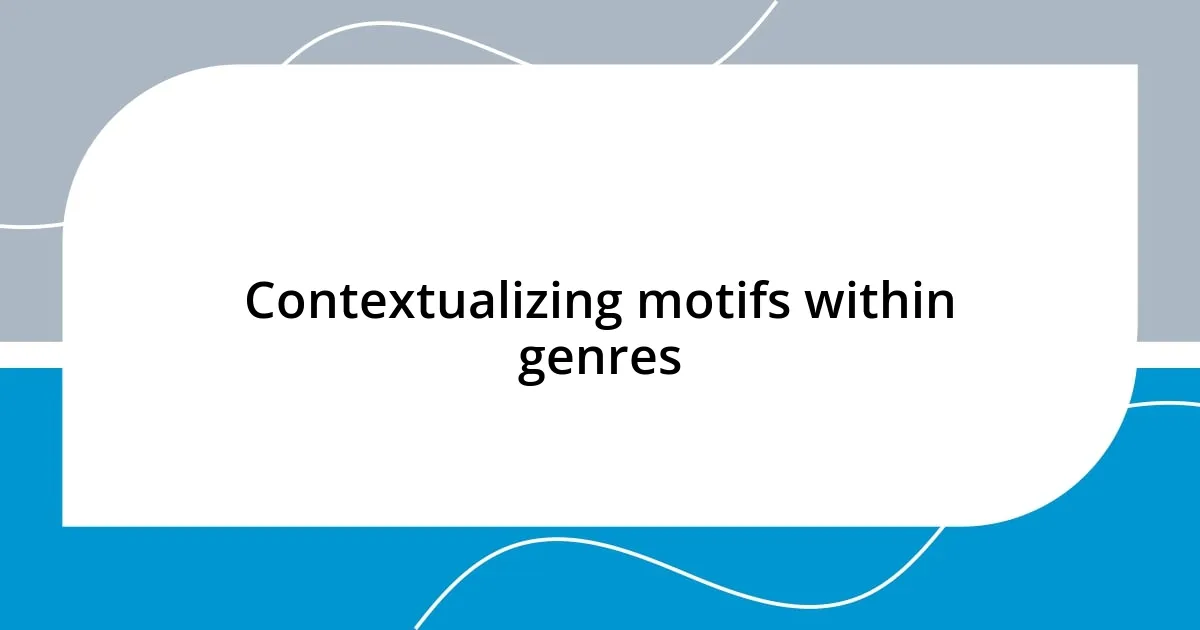
Contextualizing motifs within genres
As I explore the connection between motifs and musical genres, I can’t help but notice how each genre shapes the emotional landscape of the motifs it employs. For instance, during my time delving into jazz, I realized that motifs often have a playful, improvisational quality. This reminds me of a jam session I attended where a saxophonist would weave in and out of a motif, letting it morph and breathe in the moment. Doesn’t it feel like a conversation where each musician builds on the last, creating a shared narrative that is constantly evolving?
In contrast, when examining classical motifs, I’m often struck by their precision and intentionality. Take my experience studying Baroque music—motifs here tend to be intricate and closely tied to the structure of the piece. One time, while analyzing Bach’s “Brandenburg Concerto,” I was fascinated by how each motif played its role in a grand dialogue, almost like characters in a play with defined entrances and exits. This thought led me to ponder: how does the time period influence the motifs we hear and the stories they tell?
Pop music, on the other hand, presents motifs in a different light. Here, I often observe the use of catchy hooks that linger in the listener’s mind, purposefully designed to evoke familiarity and emotion. Listening to a Taylor Swift song, for example, I recall how a simple melodic motif encapsulated themes of love and heartbreak that resonated deeply within me. I find myself asking, how do these motifs shape our personal experiences and memories related to the music? The exploration of motifs across genres reveals not only the craftsmanship behind the music but also how those musical threads connect us to our own emotions and stories.

Practical applications of motifs analysis
There are numerous practical applications for motifs analysis beyond simply enhancing our listening experience. For instance, in my work as a music educator, I’ve often utilized motif breakdowns to help students understand composition techniques. I vividly recall a class discussion where we dissected the iconic motif from “Dies Irae.” Breaking it down not only illuminated its historical significance but also inspired students to create their own original motifs with a deeper appreciation for structure and emotion. Have you noticed how understanding a motif can unlock a new layer in a piece?
Another significant application lies in music therapy. I’ve seen firsthand how certain motifs evoke specific emotional responses, making them powerful tools for healing. In one session, we played a calming motif from Debussy that transformed the atmosphere instantly, soothing anxiety and fostering relaxation among participants. It made me realize how even simple melodic lines can serve as anchors for individuals navigating their emotions. Doesn’t it strike you as remarkable that a few notes can have such a profound impact?
Additionally, motifs can inform performance interpretations, allowing musicians to infuse their personal touch into pieces. I remember a performance of Chopin’s Nocturne in E-flat Major where I chose to emphasize a recurring motif that captures the piece’s longing quality. By highlighting this motif, I crafted an emotional narrative that resonated with the audience. Isn’t it fascinating how these small elements can shape not just a musical passage, but the entire mood of a performance?
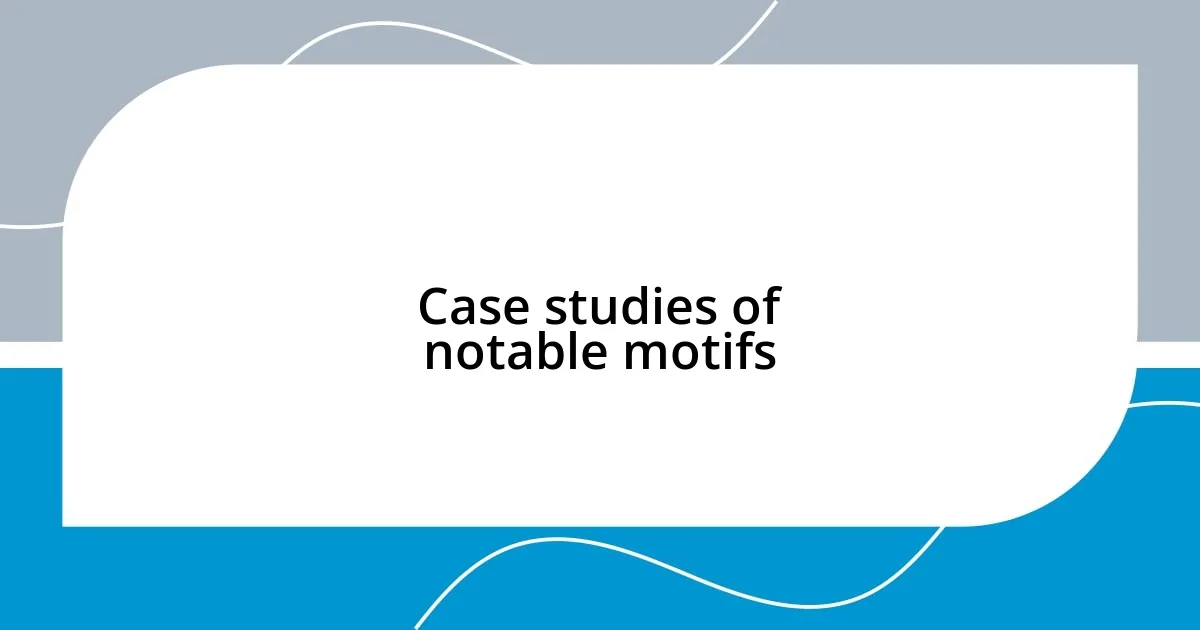
Case studies of notable motifs
One of the most striking case studies I’ve encountered is the motif from Beethoven’s Symphony No. 5. This four-note motif—short-short-short-long—has such a compelling presence. I remember attending a live performance and feeling the anticipatory energy in the hall; it was as if the motif commanded our attention before it even started. Have you ever felt that raw power in music? It’s incredible how that simple pattern can convey fate and heroism, resonating in listeners across generations.
Then there’s the unforgettable “Jaws Theme” by John Williams. Its two-note motif is synonymous with impending danger, and I can’t help but chuckle when recalling the suspenseful atmosphere during movie nights with friends. Every time I hear those notes, my heart begins to race in anticipation, and I find myself gripping the edge of my seat. Isn’t it fascinating how such a minimalist motif can evoke such a visceral response? It’s the brilliance of using repetition and simplicity to create something so impactful.
Another memorable motif comes from Tchaikovsky’s “Swan Lake.” The motif represents the swan and its elegance—a blend of grace and yearning that always resonates with me. During a ballet performance I attended, the moment the motif played, I could feel the dancers embodying its essence. Have you ever experienced music that seemed to dance alongside the performers? It underscores how motifs can transcend notes on a page and embody emotions that draw us deeper into the narrative, connecting both music and movement seamlessly.

